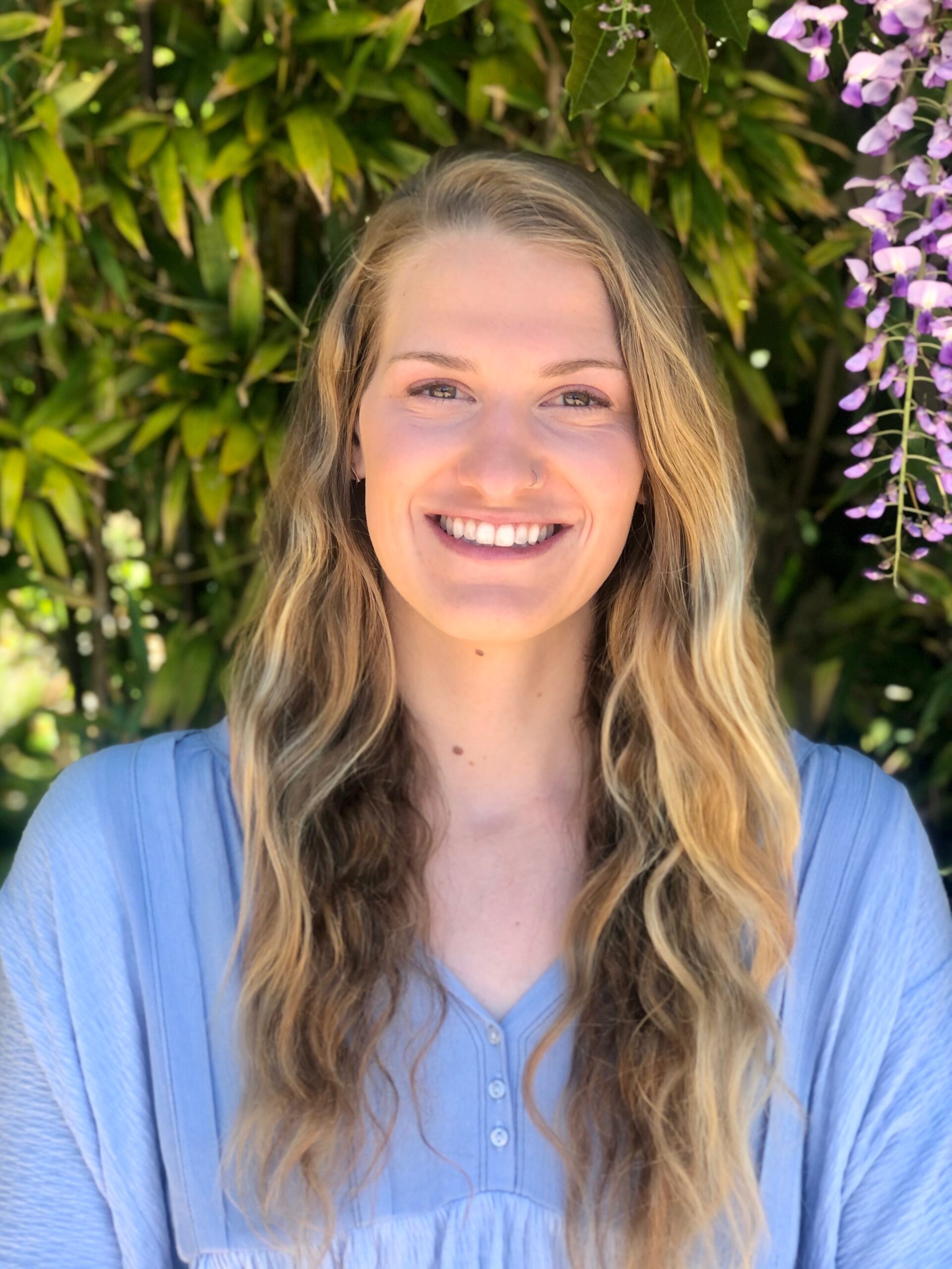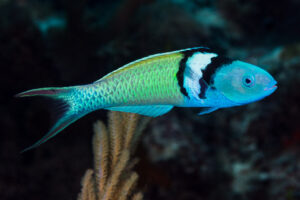Nicholson, M.D., Andrés Pagán, J., Hendrick, G.C., Sikkel, P.C. Functional diversity among coral reef fishes as consumer of ectoparasites. Coral Reefs (2024). https://doi.org/10.1007/s00338-023-02459-4.
The circle of (a parasite’s) life
Imagine having a friend dedicated to removing annoying critters, like lice and ticks off your skin. A little gross? Sure. Helpful and convenient? Definitely. Coral reef fishes have just that, in the form of cleaner fishes. Cleaner fishes, often referred to as cleaners, are crucial to maintaining fish community health by eating parasites off host fishes. Cleaners are especially important since parasitism is super common in coral reefs, affecting the ecosystem on both individual and community levels.
There are many different types of parasites. Some live inside the fish while others, called ectoparasites, are free-floating and attach to the outside of fish. The most common of these ectoparasites are Gnathiid isopods which attach to fish for short periods of time to feed on blood and bodily fluids. Gnathiids can impact spawning and migration behaviors, decrease red blood cell counts, and increase stress hormone levels. These negative impacts on an individual’s health can cascade through the entire community reducing overall health.

Cleaners range in their diet and behavior. Dedicated cleaners are those that rely almost solely on parasites as their main food source, while facultative cleaners are those that eat parasites only sporadically. And non-cleaners are just what they sound like – fish that don’t engage in cleaning behavior and rely on other food sources. Even though gnathiids infect most reef fish species, little is known about facultative and non-cleaner consumption of these parasites. Do non-cleaner fishes feed on free-swimming gnathiids? Are facultative cleaners able to keep gnathiid populations in check as successfully as dedicated cleaner fishes? A group of scientists studying reef fishes in the tropical western Atlantic Ocean have the answers.
Bluehead wrasse (Thalassoma bifasciatum), a facultative cleaner fish. Photo by François Libert, CC BY-NC-SA 2.0.
Spilling the beans to count gnathiids
Seven hundred and ninety-seven fishes across 61 species and 16 families (cleaners and non-cleaners) were collected from coral reefs in the U.S. Virgin Islands. Scientists studied their gut contents and feces to count the number of gnathiids consumed by each fish. For larger fish, gut contents were removed using a stomach pump. Smaller fish were humanely euthanized for dissection. Since gnathiid exoskeletons don’t break down during digestion, a trained eye can identify them within the fish gut and feces.

Researchers found that dedicated and facultative eat way more gnathiids than non-cleaner species. In fact, calculated by the number gnathiids consumed, one cleaner fish is equivalent to 73 invertivores (fish that eat invertebrates), 89 herbivores (fish that eat plant matter), and 229 predators (fish that eat other animals). The infrequent occurrence of gnathiids in the gut contents and feces of non-cleaners suggests that these fish are accidentally consuming gnathiids rather than targeting them as an extra food source.
A clean reef is a happy reef
These findings highlight the critical role of both dedicated and facultative cleaners in regulating parasite populations within coral reefs. Preserving these vital species becomes paramount for sustaining the health and resilience of coral reefs, serving as a crucial defense against parasitism that could otherwise threaten the balance of reef ecosystems. Making cleaner fish a conservation priority is imperative in protecting these vital ecosystems and maintaining the delicate balance of their communities.
Cover photo by François Libert, CC BY-NC-SA 2.0.

I’m an MSc student in marine biology at the University of Hawaiʻi at Mānoa. I conduct research through the Johansen Fish Resilience Lab at the Hawaiʻi Institute of Marine Biology. I’m currently studying the effects of sedimentation on the foraging behavior of herbivorous coral reef fish. Before grad school, I got a double BS in environmental geology and environmental studies at Tufts University before working at a shark research lab in the Bahamas. In my free time, you can find me climbing, running, or reading at the beach.


